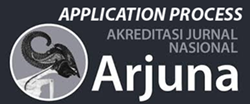Enhancing Employee Performance through Strategic Artificial Intelligence Initiatives
DOI:
https://doi.org/10.59653/jbmed.v2i01.548Keywords:
technology adoption, organizational culture, strategic initiatives, employee performance, AI collaborationAbstract
In the current dynamic AI environment, it is crucial for organizations to enhance the cooperation between humans and technology in order to enhance employee performance. This research examines strategic steps to thrive in the workplace amid the presence of AI. The study analyzes the symbiotic relationship between employees and AI technology to identify effective strategies that organizations can implement to improve employee performance. The synthesis of empirical data and case studies from various industries is achieved through the utilization of an interdisciplinary framework that includes organizational psychology, technology adoption theory, and strategic management. The analysis focuses on the impact of customized initiatives such as ongoing learning programs, customizable upskilling, and AI-conscious leadership in enabling employees to collaborate effectively with AI and leverage its capabilities to increase productivity and drive innovation. The study highlights the importance of strategically integrating AI and implementing proactive initiatives that allow employees to easily adopt the technology. In addition, it underscores the importance of organizational culture in cultivating a growth mindset that enables AI to drive individual and collective achievement. The study offers an overarching framework for organizations as they navigate artificial intelligence (AI) integration while placing a high emphasis on developing and growing their employees. Implementing these strategic initiatives can enhance business success in the era of artificial intelligence by optimizing employee performance and achieving competitive advantage.
Downloads
References
Alamri, B. (2022). The Role of Corpus Linguistics in Grammar Instruction: A Review of Literature. International Journal of Linguistics, 14(6), 158. https://doi.org/10.5296/ijl.v14i6.20500
Almustafa, E., Assaf, A., & Allahham, M. (2023). IMPLEMENTATION OF ARTIFICIAL INTELLIGENCE FOR FINANCIAL 1 INTRODUCTION Artificial intelligence ( AI ) is the intelligence of robots , not humans . Most academic textbooks characterize artificial intelligence as studying “ intelligent agents .” These agent. 1–17.
Batubara, J. (2017). Paradigma Penelitian Kualitatif dan Filsafat Ilmu Pengetahuan dalam Konseling. Jurnal Fokus Konseling, 3(2), 95. https://doi.org/10.26638/jfk.387.2099
Belmahdi, A., Li, J., & Muirhead, B. (2022). Youth English Language Learners’ Learning Outcomes and Experiences of Digital Technology-Based Writing Instruction: A Literature Review of Key Empirical Evidence. Journal of Digital Life and Learning, 2(1), 1–51. https://doi.org/10.51357/jdll.v2i1.166
Chen, D., Esperança, J. P., & Wang, S. (2022). The Impact of Artificial Intelligence on Firm Performance: An Application of the Resource-Based View to e-Commerce Firms. Frontiers in Psychology, 13(April). https://doi.org/10.3389/fpsyg.2022.884830
Chomutare, T., Tejedor, M., Svenning, T. O., Marco-Ruiz, L., Tayefi, M., Lind, K., Godtliebsen, F., Moen, A., Ismail, L., Makhlysheva, A., & Ngo, P. D. (2022). Artificial Intelligence Implementation in Healthcare: A Theory-Based Scoping Review of Barriers and Facilitators. International Journal of Environmental Research and Public Health, 19(23). https://doi.org/10.3390/ijerph192316359
Dean, M. W. (1906). Practical Side of Preparation by Martha Hale Shackford,. 686–689.
Dobrev, D. (2012). A Definition of Artificial Intelligence. 1–7. http://arxiv.org/abs/1210.1568
Elshaer, I. A., Azazz, A. M. S., & Fayyad, S. (2023). Green Management and Sustainable Performance of Small- and Medium-Sized Hospitality Businesses: Moderating the Role of an Employee’s Pro-Environmental Behaviour. International Journal of Environmental Research and Public Health, 20(3), 1–17. https://doi.org/10.3390/ijerph20032244
Ghasemi, S., Salehi, S. Y., & Ameneh, M. (2019). Assessing Employee Performance Based on Motivational Indicators ; Developing Performance and Enhancing Efficiency in Order to Achieve Strategic Goals at IranKhodro Company. https://www.sid.ir/FileServer/SE/635E20190101
Harayama, Y., Milano, M., Baldwin, R., Antonin, C., Berg, J., Karvar, A., & Wyckoff, A. (2021). Artificial Intelligence and the Future of Work. https://doi.org/https://doi.org/10.1007/978-3-030-69128-8_4
Kathukya, C. S., Mwangi, D. C. I., & Machogu, P. C. (2022). Effect of Career Counselling on Employee Performance in Murang’a Water and Sanitation Company Limited. International Journal of Management and Humanities, 8(8), 12–20. https://doi.org/10.35940/ijmh.h1460.048822
Kemenbudristek. (2023). Artificial Intelligence (AI): Bahaya atau Dukungan untuk Pekerjaan Manusia? https://itjen.kemdikbud.go.id/web/artificial-intelligence-ai-bahaya-atau-dukungan-untuk-pekerjaan-manusia/
Kwame Adom, R., & Simatele, M. D. (2022). Enhancing Employee Performance in the Water Sector in South Africa: The Role of Training and Skill Development Programmes. International Journal of Research and Review, 9(7), 446–467. https://doi.org/10.52403/ijrr.20220749
Lu, L. (2023). Enhancing Organizational Performance: Unveiling the Dynamics of Performance Management and Employee Engagement. Academic Journal of Business & Management, 5(19), 46–50. https://doi.org/10.25236/ajbm.2023.051908
Manthena, S. R. L. (2021). Impact of Artificial Intelligence on Recruitment and its Benefits. International Journal of Innovative Research in Engineering & Multidisciplinary Physical Sciences, 9(5), 1–1. https://doi.org/10.37082/ijirmps.2021.v09si05.013
Manunggal, N., Santoso, I. T., & Wicaksana, S. (2022). Pengaruh Sistem Informasi Sumber Daya Manusia (HRIS) dan Kecerdasan Buatan Terhadap Kinerja Industri Pertahanan. Journal of Industrial …, 3(6), 111–120. https://www.jiemar.org/index.php/jiemar/article/view/346
Mardiani, E., Judijanto, L., & Sufa, S. A. (2023). Online Marketing Strategy and Customer Loyalty in E-commerce- Based Asian Business : The Case of Tokopedia and Shopee. 1(04), 129–136.
Mylène Struijk, S. Angelopoulos, C. Ou, R. D. (2019). A Strategic Approach to Information Quality and Its Implications for the Performance of Military Organizations. https://www.semanticscholar.org/paper/A-Strategic-Approach-to-Information-Quality-and-Its-Struijk-Angelopoulos/37eca8f92576f9552ebbbb3a60cec8d5ca58bf2f
Panda, G., Dash, M. K., Samadhiya, A., Kumar, A., & Mulat-weldemeskel, E. (2023). Artificial intelligence as an enabler for achieving human resource resiliency: past literature, present debate and future research directions. International Journal of Industrial Engineering and Operations Management. https://doi.org/10.1108/ijieom-05-2023-0047
Penantoniati, B., Nilasari, B. M., & Nisfiannoor, M. N. M. (2023). Anteseden employee performance BPS DKI Jakarta. Kinerja, 20(1), 31–38. https://journal.feb.unmul.ac.id/index.php/KINERJA/article/download/12684/2385
Prentice, C., Wong, I. K. A., & Lin, Z. (CJ). (2023). Artificial intelligence as a boundary-crossing object for employee engagement and performance. Journal of Retailing and Consumer Services, 73(April), 103376. https://doi.org/10.1016/j.jretconser.2023.103376
Robert, M. J., Salamzadeh, Y., & Abdul Rahim, N. F. (2021). Impact of Justice in Employee Performance and Moderating Role of Artificial Intelligence: a Conceptual Study. Advanced International Journal of Business, Entrepreneurship and SMEs, 3(10), 39–48. https://doi.org/10.35631/aijbes.310004
Sabil, S., Bangkara, B. M. A. S. A., Mogea, T., Niswan, E., & Timotius, E. (2023). Identification of HRM Improvement Strategy Using Artificial Intelligence in Modern Economic Development. International Journal of Professional Business Review, 8(6), e01835. https://doi.org/10.26668/businessreview/2023.v8i6.1835
Simmons, A. ., & Chappell, S. . (1988). Artificial intelligence-definition and practice. 14–22. https://doi.org/10.1109/48.551
Snyder, H. (2019). Literature review as a research methodology: An overview and guidelines. Journal of Business Research, 104(July), 333–339. https://doi.org/10.1016/j.jbusres.2019.07.039
Straub, V. J., Morgan, D., Bright, J., & Margetts, H. (2023). Artificial intelligence in government: Concepts, standards, and a unified framework. Government Information Quarterly, 40(4), 1–34. https://doi.org/10.1016/j.giq.2023.101881
Wang, J., Xing, Z., & Zhang, R. (2023). AI technology application and employee responsibility. Humanities and Social Sciences Communications, 10(1). https://doi.org/10.1057/s41599-023-01843-3
Wangusi, J., & Abuya, I. (2019). International Journal of Academic Multidisciplinary Research (IJAMR) Influence of Gender Equality Initiatives on Performance of Female Journalists in the Media Industry in Kenya. 3(6), 23–33. www.ijeais.org/ijamr
Wesemann, A. (2023). Turbulence Ahead: Strategic Human Capital Management, Job Satisfaction, and Turnover Intention. https://doi.org/https://doi.org/10.1177/00910260231192482
Yau, K. L. A., Lee, H. J., Chong, Y. W., Ling, M. H., Syed, A. R., Wu, C., & Goh, H. G. (2021). Augmented Intelligence: Surveys of Literature and Expert Opinion to Understand Relations between Human Intelligence and Artificial Intelligence. IEEE Access, 9, 136744–136761. https://doi.org/10.1109/ACCESS.2021.3115494
Downloads
Published
How to Cite
Issue
Section
License
Copyright (c) 2023 Meithiana Indrasari, Eko Pamuji

This work is licensed under a Creative Commons Attribution-ShareAlike 4.0 International License.
Authors who publish with this journal agree to the following terms:
- Authors retain copyright and grant the journal right of first publication with the work simultaneously licensed under a Creative Commons Attribution-ShareAlike that allows others to share the work with an acknowledgement of the work's authorship and initial publication in this journal.
- Authors are able to enter into separate, additional contractual arrangements for the non-exclusive distribution of the journal's published version of the work (e.g., post it to an institutional repository or publish it in a book), with an acknowledgement of its initial publication in this journal.
- Authors are permitted and encouraged to post their work online (e.g., in institutional repositories or on their website) prior to and during the submission process, as it can lead to productive exchanges, as well as earlier and greater citation of published work (See The Effect of Open Access).





























